Rob’s been back in touch with some very impressive model train landscaping – he has finished bridge project.
He think it ‘looks okay’. I think it looks amazing.
To be honest, the pics below do not do it justice, so please don’t miss his youtube. I love the way the bridge arches (next to the trestle bridge) frame the oak tree and the cottage. It’s some really clever model making.
Rob’s youtube also shows some details he’s added to his London Underground scene. Again, it’s amazing modeling:
“Hi Al,
I have completed the bridge project. It is done and landscaped. It came out okay and very works well.
I made a couple mistakes on it which I detail in the video, nothing major.
I certainly enjoyed the experience and I am looking for something new to work on. I think my better half has come up with a couple of things to keep me busy for a while. That’s good, it will give me time to dream up my next Farland build.
Rob”
Model train landscaping:
If you missed Rob’s earlier posts on the bridge, they are here:
Rob’s also been busy adding to the London Underground side of his layout too – his detailing really is stunning:
A huge big thanks to Rob for sharing his model train landscaping – it’s always a treat when I see his name in my inbox.
(If you missed his London Underground post, it’s here: Model London Underground.)
You can also see more of Rob in the Hall of Fame.
That’s all for today folks.
Please do keep ’em coming because it’s getting a bit thin on the ground again this end.
And if today is the day you get started on your layout, the Beginner’s Guide is here.
Best
Al
More HO scale train layouts here if that’s your thing.
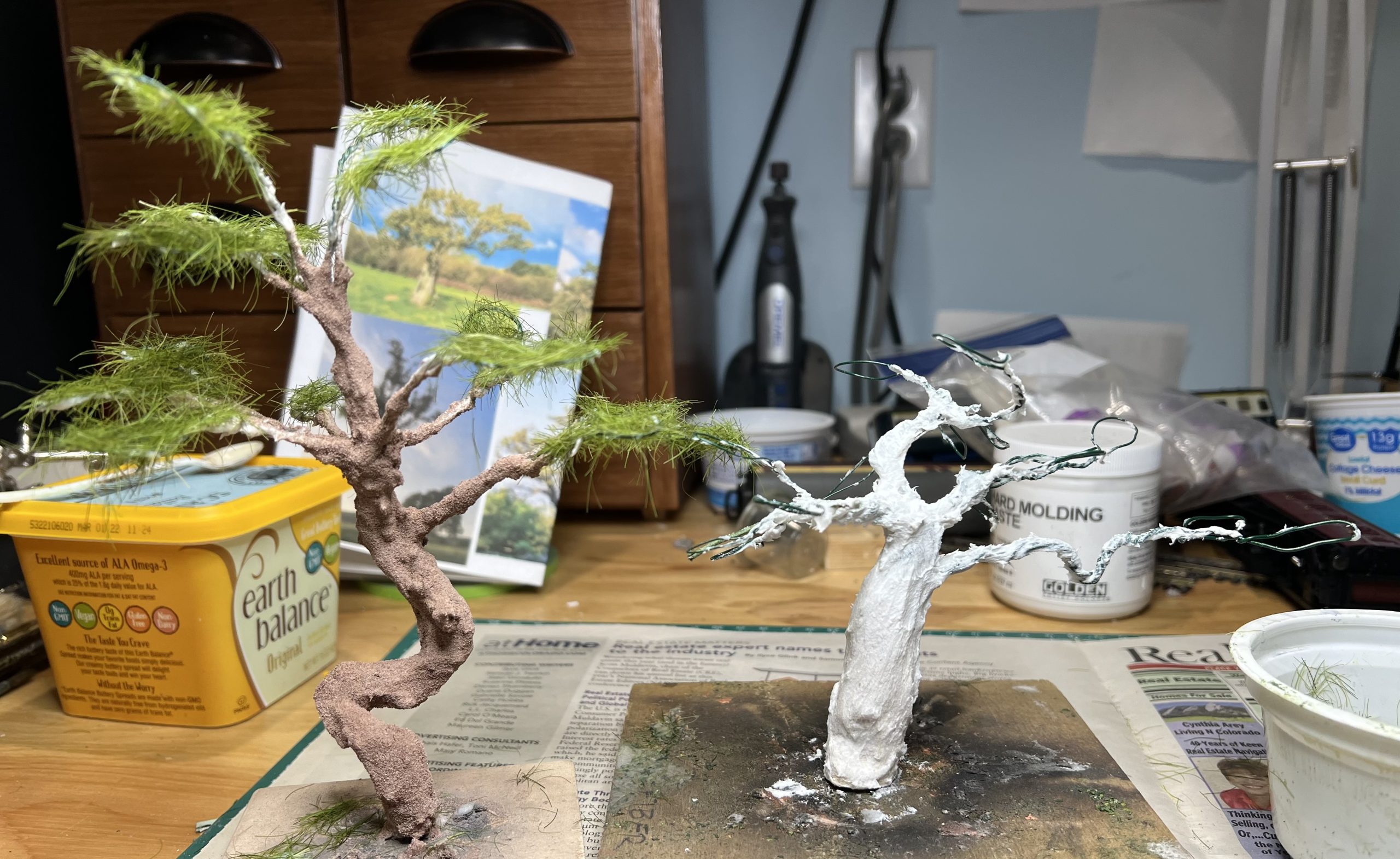
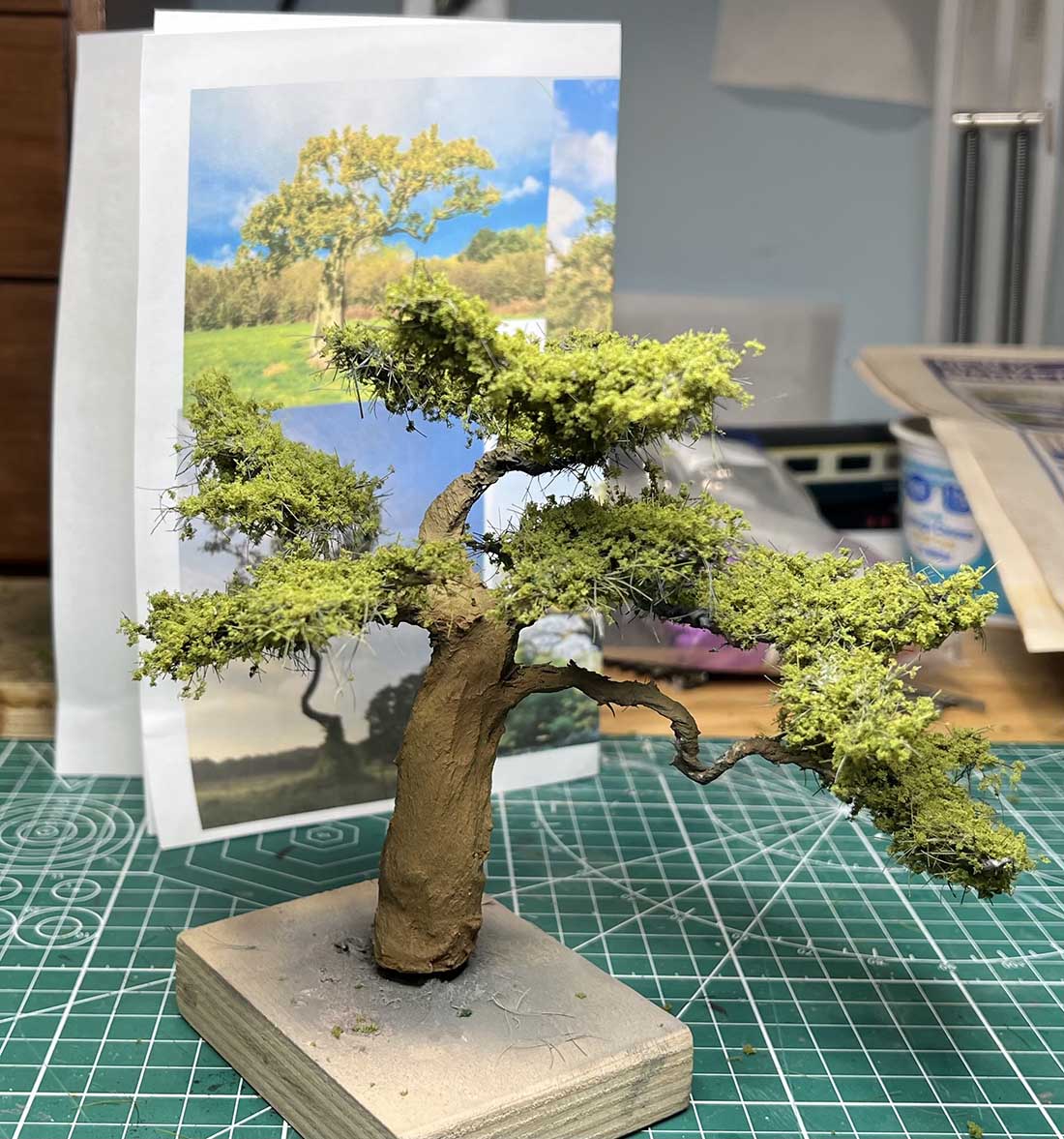

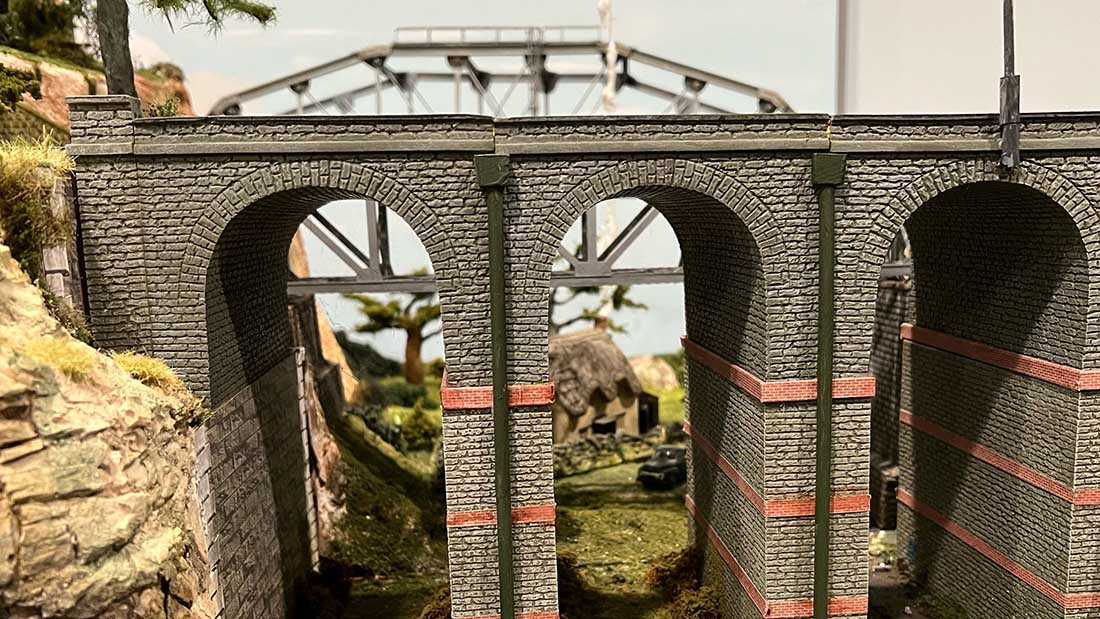
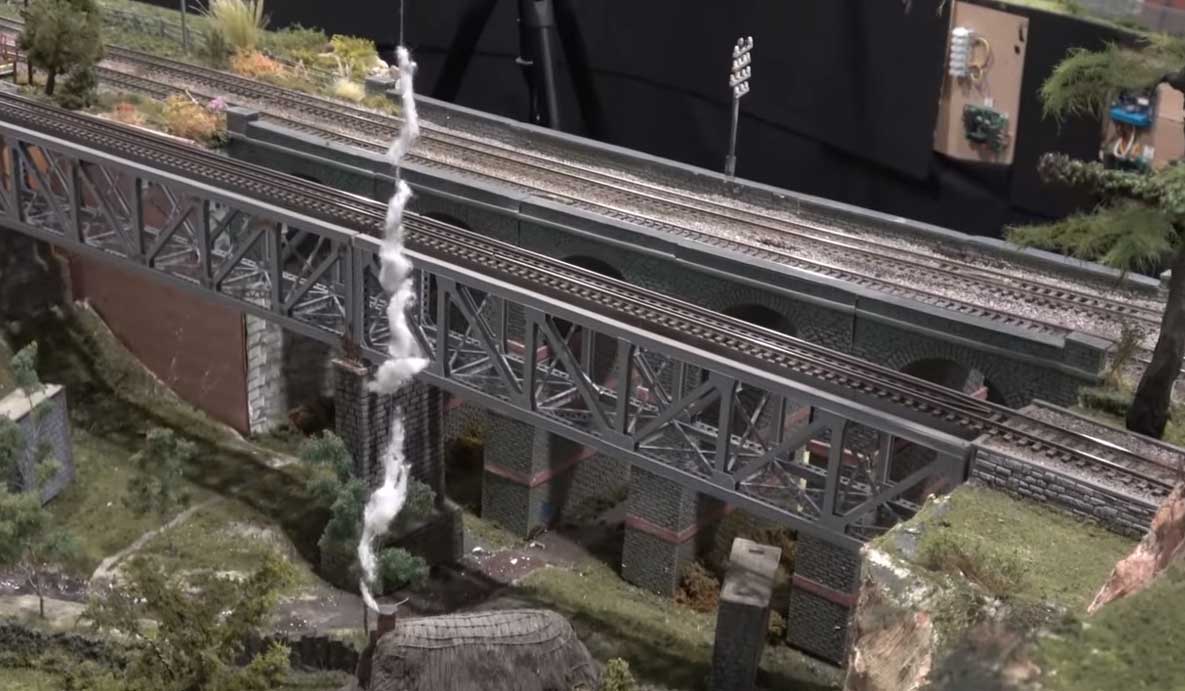
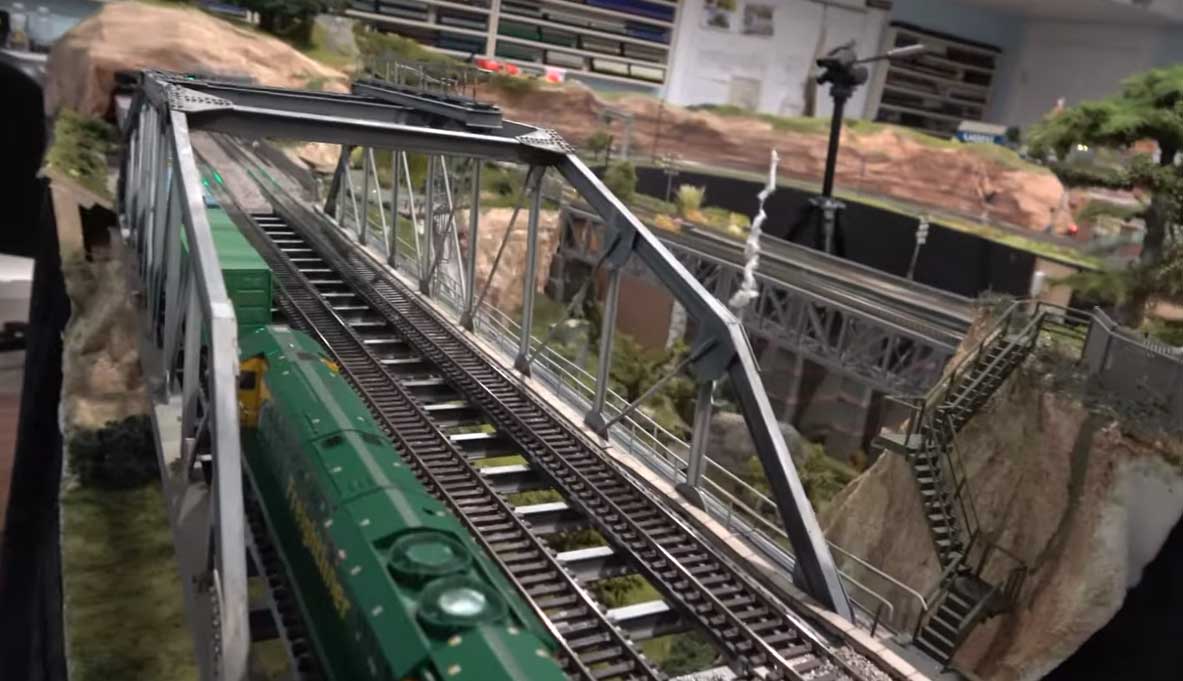
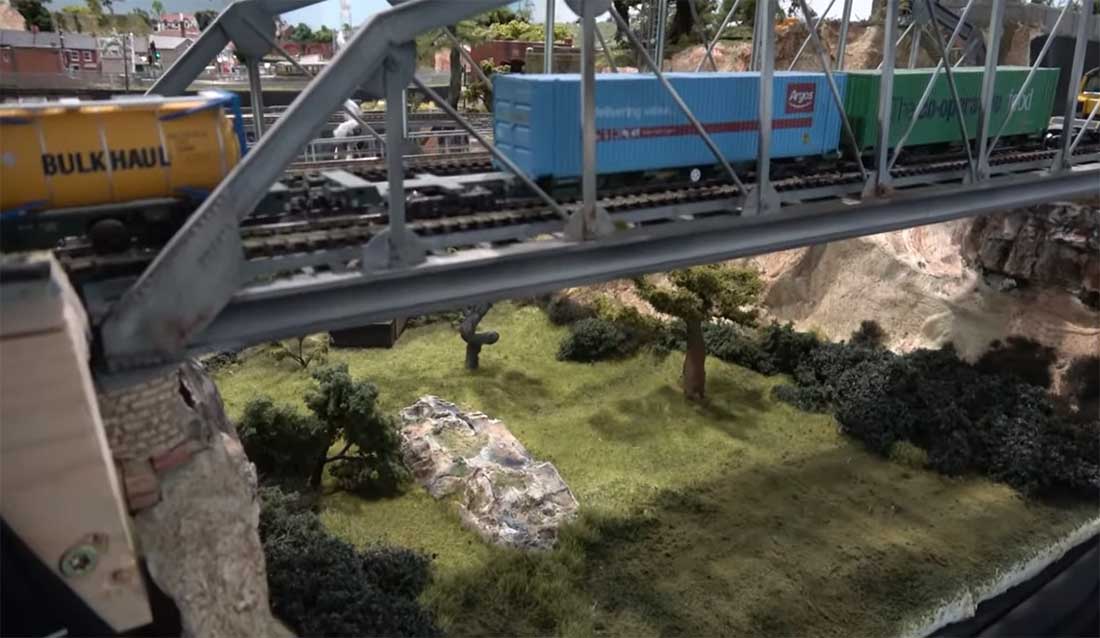
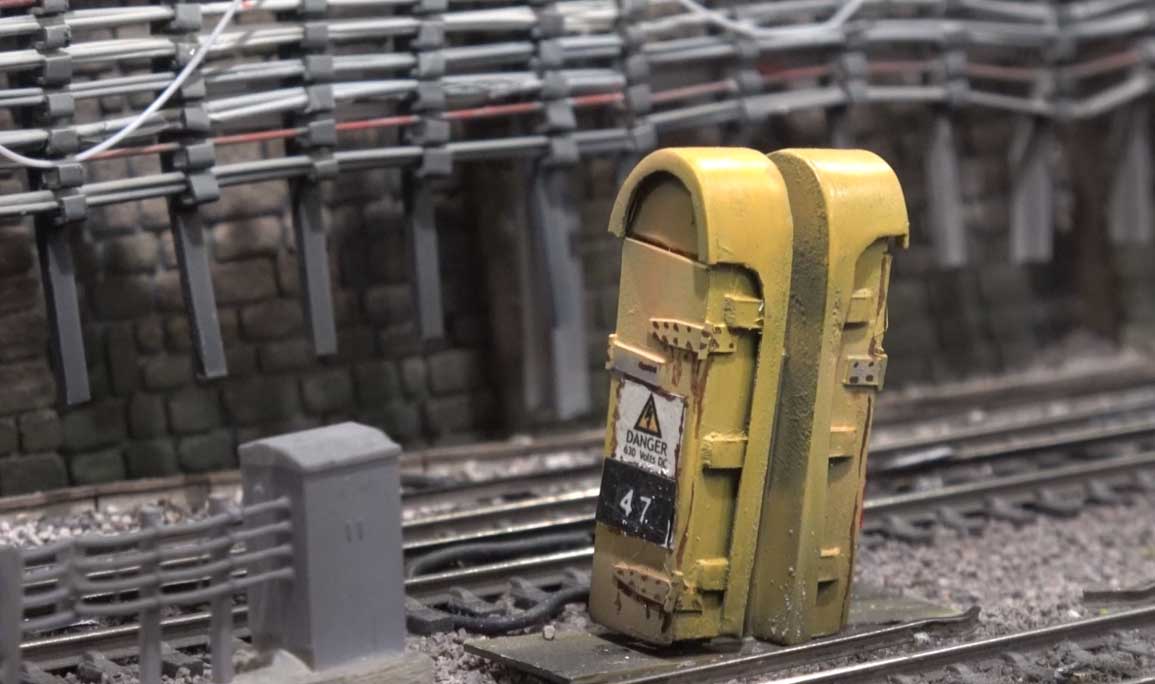
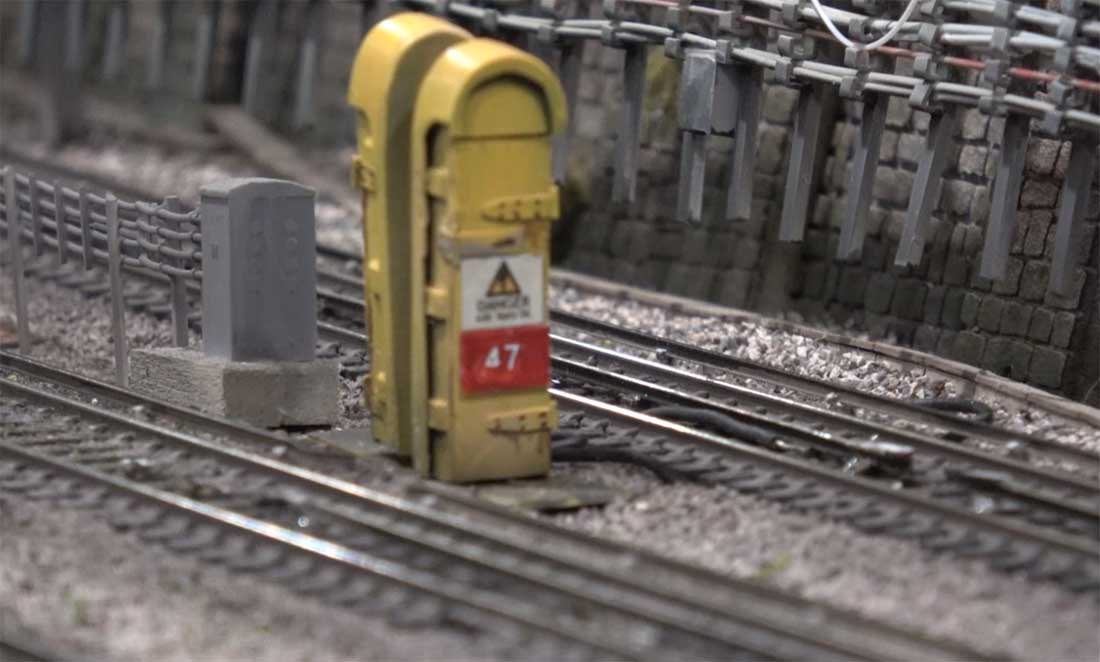


Rob, I think your scratch built trees look really fantastic. When viewed from under the bridge -it looks real. Well done.
Brian – the HOn3 guy in Knysna RSA
really nice terrain work. good job.
So look at that smoke, suspended on fine thread? The intricate tread work on those flights of steps, need not say a thing about landscaping- what it should look like afar and close, really great. With the show, has taken this into another dimension. Can expect nothing less these days here, spoiled.
Regards, Rich
love the trees & bridges the whole setup is awesome
First, I have to say that Rob’s canyon landscaping is wonderful. Much better than I have managed in several efforts. Well done!
When I was a young lad, my dad gave me a book “The Work of the Bridge Builders” which eventually led me to study to become a civil engineer in the hope of having an opportunity to design bridges. That didn’t materialize, but I have remained very fond of bridges. To wit, I feel a need to respond to Rob’s comment about suspension bridges not being very appropriate for railroads. There are significant factors which contradict that opinion.
The first, is that suspension bridges can cost as little as one tenth that for arch or truss bridges of equivalent length and load capacity, particularly for very long spans. But they do require an engineering team who understand how to compensate for the flexibility and balance, as well as the methods for the actual construction, and there are not a lot of such teams with the necessary expertise. Because suspension bridges can be built for much lower cost, they are designed to carry vehicular traffic as well as trains, often in combination. None-the-less, suspension bridges for railroads have been built successfully and should not be disregarded out-of-hand.
“The Niagara Falls Suspension Bridge stood from 1855 to 1897 across the Niagara River and was the world’s first working railway suspension bridge. It spanned 825 feet (251 m) and stood 2.5 miles (4.0 km) downstream of Niagara Falls, where it connected Niagara Falls, Ontario to Niagara Falls, New York. Trains used the upper of its two decks, while pedestrians and carriages used the lower.” —
Modern examples are even more impressive. The double-decker Shimotsui-Seto Bridge (opened 1988) carries a road and a railway over a span of 940 m between Honshū and Hitsuishijima in Japan. The double-decker Tsing Ma Bridge (opened 1997) carries a road and a railway over a span of 1,377 m between Tsing Yi and Ma Wan islands, Hong Kong. The book Structural Health Monitoring of Long-Span Suspension Bridges by You Lin Xu and Yong Xia describes in detail how the bridge engineers ensure this operates safely.
In terms of model railroading, however, suspension bridges make much less sense, primarily because the longer spans are seldom practical due to space limitations. The Niagara Falls Bridge modeled in HO would be just short of 13 feet, while the Shimotsui-Seto Bridge would be about 48 feet long. Of course, modelers can and do take liberties in revising sizes to make things fit. But a cut down suspension bridge loses much of the feeling of the grandeur and majesty of a real bridge.
Beautiful work Rob. You are a true artist. I noticed when you were talking about the Crabapple tree, I saw a face in the main trunk of the tree. Did you do that on purpose or am I just seeing things? Great work. I have seen some of the other pictures of your work showing the cables along the retaining wall. I don’t know how you have the patience to do that level of detail.